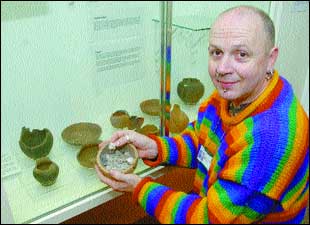By the end of Saturday, the team had recorded four flatlets and had almost completed two more. It's possible that as people become more familiar with the techniques involved, they will speed up and we will get most of the building planned today. David has done a plan of the courtyard and Brent is working on elevations of the exterior. Flatlets 2, 8 and 12 are being surveyed this morning.
A quick Google search reveals a Samuel Beldam of Royston, born 1705, who married Hester Wedd in 1737, who may be the vandal whose name is recorded in Flatlet 5. There also seems to be a Samuel Beldam of Dunmow listed as an alumnus of the University of Cambridge in 1768 and another who was transported as a criminal later in the eighteenth century. Given that the Sam of our panel would have been a resident of the parish poorhouse (he can hardly have been one of Kempe's widows!), it's tempting to identify him with either the first or last of the three I've located so far.
The best discovery so far today has been the location of the panels with the initials of William Croocar junior, with those of his wife (IC) and the date of 1585. These have been known about for some time, but are recorded as being in a different flatlet. They may have been moved during the restoration of 1958-60, the flatlet number may have changed or the article in which they are mentioned may give the wrong flatlet number.

The date 1585 carved into a panel, with Mrs Croocar's initials to the right






